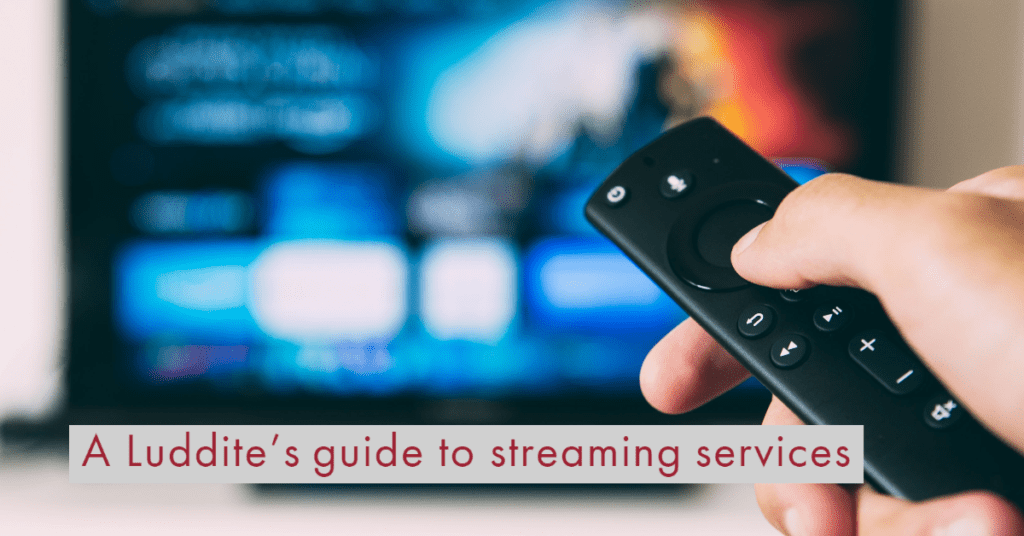Technology is changing. And, while many of us still own shoes older than our first Web browser, the act of reading text on a computer is outmoded as a platform for communication, according to many (i.e., our kids).
And if you still own a landline phone and a cable TV box, well bless your heart. The world is leaving us cable viewers in the dust as it finds newer, more efficient ways to entertain and inform the public. Programming can now be viewed on desktop computers, laptops, tablets, and phones, as well as built-for-purpose TV screens.
An entirely new industry emerged while we were watching Turner Classic Movies, and it has become such a huge business that any investor and any investment newsletter needs to understand this brave, new world of subscription streaming services.
“In 2019, we each spent $640 on digital subscriptions like streaming video and music services, cloud storage, dating apps, and online productivity tools,” according to the New York Times. “That was up about 7 percent from $598 in 2017. We increased our spending the most last year on streaming TV services, paying $170 to subscribe to the likes of Netflix, Hulu and new entrants like Disney Plus and Apple TV Plus. While that was far cheaper than most traditional cable TV packages, which cost roughly $1,200 a year, it was up 30 percent from the $130 we spent on streaming TV services in 2017.”

Cast of characters
You’ve probably heard of the “FAANG” stocks, the bellwethers of the consumer discretionary space in the technology sector: Facebook, Amazon, Apple, Netflix, and Google. Of those, all but Facebook offers a subscription streaming service.
Amazon connects with 100 million subscribers via Prime Video, with or without the Fire TV Stick device. Apple’s new Apple TV+ — again, with or without the Apple TV device – is just getting off the ground, but Stephen Spielberg, Jennifer Anniston, Reese Witherspoon, Steve Carell, Samuel L. Jackson, Chris Evans, M. Night Shyamalan and, oh yeah, Oprah Winfrey are all onboard. Netflix is Netflix, the 167 million subscriber-strong company that put the corner video store out of business and is now a fixture at the Oscars. Google, in addition to owning YouTube and along with it the Originals slate of programs, is also moving into the infrastructure business, providing the Chromecast Nexus player, manufacturing routers and breaking into wi-fi provisioning.

With the exception of Netflix, though, none of these massive tech conglomerates focuses entirely on content. But there are certainly others who do.
To start with, there are the legacy companies who remember when content was called “programming”.
The Walt Disney Company actually has two subscription streaming services. Hulu offers a way around cable subscriptions by offering network TV shows on-demand or, more recently, live. Just this past year, Disney+ was launched to bring Disney’s productions and its franchises – Marvel, Star Wars, Pixar, 20th Century Fox Studios – under one umbrella. WarnerMedia offers HBO Go to those who still subscribe to cable and HBO Now to those who have already cut the cord; it also owns the DC Universe superhero channel. ViacomCBS declined to participate in Hulu, so CBS All Access serves as a standalone stream for the Tiffany Network’s fare; meantime, top executives are still trying to hash out how to best stream their newly acquired Paramount Pictures catalog.
There are others, but they tend to fill niches related to sports, genres, and languages.
Over the top
Beyond investing in FAANG, there’s the whole world of over-the-top media services. The most prominently marked of these is Sling TV, Dish Network’s attempt to remain relevant. Sling is, by all accounts, a technologically elegant means to deliver network TV via internet. Still, it doesn’t offer all the channels Hulu does because broadcasters are concerned about how cable providers might react to their entering a deal with Dish, which is in the satellite TV business.
Sling’s service is not to be confused with digital players. We already mentioned Amazon’s, Apple’s and Google’s appliances, but the discussion isn’t complete without mentioning Roku. This company sells a device that serves as the “brain” of a TV, which allows you access to a selection of decidedly second-rate channels and local news outlets.
Hardware tends to be replaced over time by software, though, so Roku might not be around long. One exception to that rule might be game consoles, at least for now. At some point, you’ll be able to wear your virtual reality console like a hat and gloves, or maybe even have it implanted. But for now, Sony Playstation 4, Microsoft Xbox One and Nintendo Switch aren’t going anywhere. In fact, they’re all pretty much as they were in 2016. In addition to being used for their intended purpose, though, they also work as digital players. They can all receive Amazon Prime Video, Hulu, Netflix, YouTube and much more.
We interrupt this program
So why are we giving you so much detail on the state of entertainment? It’s about what stocks or sectors are likely to be trendy, and thus may be likely to outperform the market. This diversity of delivery systems – in terms of both origination and delivery – can’t last forever. At some point, the economics are going to require consolidation. Some production companies will remain while others are absorbed or disappear entirely. The same will happen with the networks and the hardware that supplies them.
While we’re confident in that educated guess – it’s just part of every industry’s path to maturity – it is still too early to pick winners and losers with any confidence. Through your qualified retirement plan, you’re probably already invested in several of the companies mentioned above. And it might not be the companies you think, or that you want. Talk to your qualified financial advisor to help you fine-tune your exposure to entertainment and gaming industry growth and remember, today you can’t just turn the dial.



